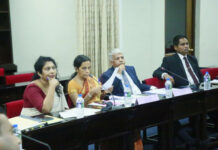Sri Lanka’s official worker remittances rose 18.8 percent year-on-year in April 2025 to $646.1 million, according to data released by the Central Bank. Though down from the March peak of $693.3 million—typically a high point due to the Sinhala and Tamil New Year—the April performance reflects continued strong growth in overseas worker earnings.
In the first four months of 2025, remittances totaled $2.46 billion, up 18.3 percent from $2.08 billion during the same period in 2024. This steady growth, averaging around 20 percent annually, follows a surge in outmigration driven by economic instability after the 2022 currency crisis and Sri Lanka’s first sovereign default.
The currency crisis was triggered by inflation-targeting policies and aggressive rate cuts by the central bank aimed at stimulating growth, which instead led to economic contraction, rising unemployment, and a collapse in small and highly leveraged businesses. The resulting loss of purchasing power pushed many Sri Lankans to seek employment abroad, particularly in Middle Eastern countries with currency board-like regimes and greater monetary stability.
Despite the strong remittance inflows, foreign employment departures in the first four months of 2025 were down 9.1 percent to 89,132, compared to 97,264 during the same period in 2024. Monthly departures averaged 22,238 this year, down from 24,300 last year. It remains uncertain whether this decline signals a longer-term trend or a temporary shift due to exchange rate stability or improving domestic job prospects.
In 2024, departures hit a record 314,828—up 5.8 percent from 2023—driven by the lingering impact of the 2022 economic crisis. The majority of workers migrated to the Middle East, particularly to the UAE, Kuwait, Saudi Arabia, and Qatar, which together accounted for the largest share of remittances in Q4 2024.
Remittances from the UAE reached $200.7 million, followed by Kuwait ($199.1M), Saudi Arabia ($166.8M), and Qatar ($147.9M). Other key sources included the United States ($123.5M), the United Kingdom ($105.2M), Italy ($97.6M), South Korea, and the Maldives ($49.9M).
The Middle Eastern countries’ appeal lies in their fixed or semi-fixed exchange regimes, which reduce currency risk for migrant workers. However, analysts caution that some Gulf nations are slowly adopting more flexible monetary frameworks, which could pose long-term risks if not managed prudently.
Sri Lanka’s remittance growth continues to be a crucial lifeline for the economy as it recovers from successive macroeconomic shocks and works toward external debt restructuring and economic stabilization.



